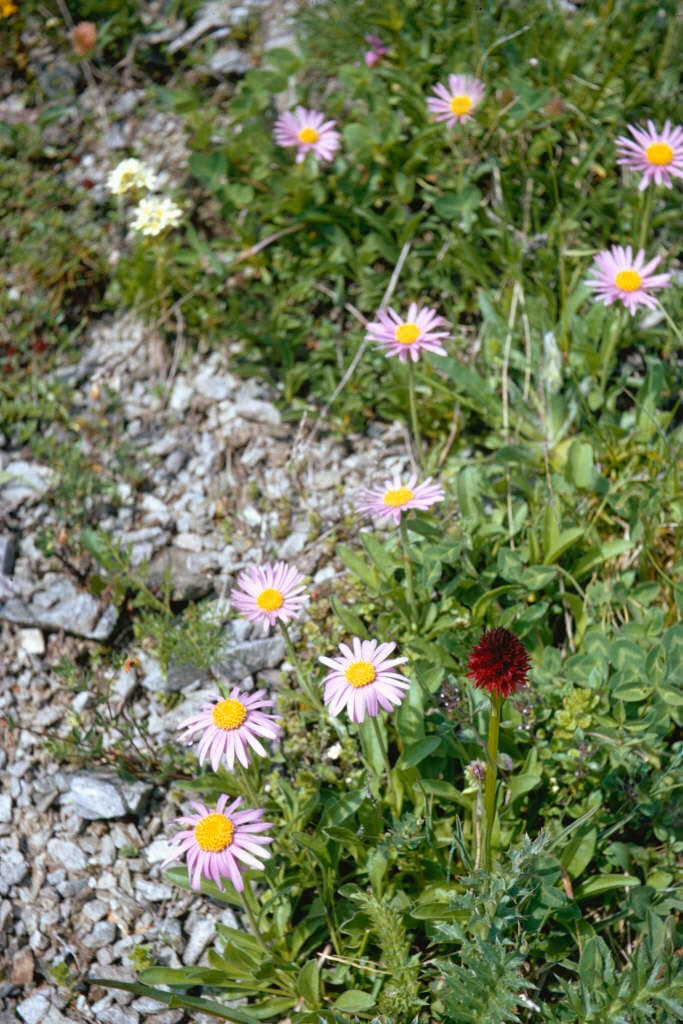Aster alpinus
blue alpine daisy
Spreading, clump-forming perennial to 25cm in height, with narrow mid-green leaves, and daisy-like, violet flowerheads to 5cm across, with a dark yellow centre, produced on upright stems, in early and midsummer

Buy this plant
Size
Ultimate height
0.1–0.5 metresTime to ultimate height
2–5 yearsUltimate spread
0.1–0.5 metresGrowing conditions
Moisture
Well–drainedpH
Acid, Alkaline, NeutralColour & scent
| Stem | Flower | Foliage | Fruit | |
| Spring | Green | |||
|---|---|---|---|---|
| Summer | Purple | Green | ||
| Autumn | Green | |||
| Winter |
Position
- Full sun
Aspect
West–facing or East–facing or South–facing
Exposure
Exposed or Sheltered Hardiness
H7Botanical details
- Family
- Asteraceae
- Native to GB / Ireland
- No
- Foliage
- Deciduous
- Habit
- Clump forming
- Genus
Aster can be perennials, annuals or subshrubs, mostly with narrow leaves, and solitary or clustered, daisy-like flowers
- Name status
Correct
- Plant range
- Alps, Pyrenees
How to grow
Cultivation
Grow in moderately fertile, well-drained soil in an open sunny position. See aster cultivation
Propagation
Propagate by seed or by division in spring or root softwood basal cuttings in spring
Suggested planting locations and garden types
- City and courtyard gardens
- Rock garden
- Coastal
- Cottage and informal garden
- Patio and container plants
- Flower borders and beds
- Underplanting of roses and shrubs
Pruning
Deadhead spent flowers to tidy, cut back stem close to the ground in late autumn
Pests
May be susceptible to leaf and bud eelworms, slugs and snails
Diseases
Asters may be susceptible to Verticillium wilt, Powdery mildews and grey moulds
Get involved
The Royal Horticultural Society is the UK’s leading gardening charity. We aim to enrich everyone’s life through plants, and make the UK a greener and more beautiful place.